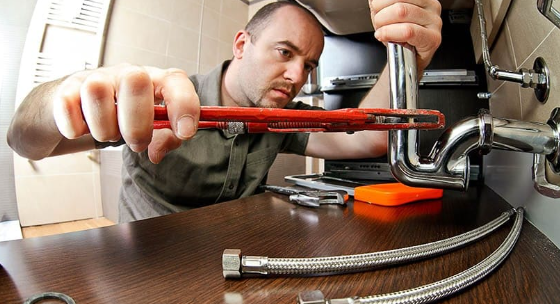Introduction to Fat Traps
When it comes to running a successful food establishment, effective waste management is crucial. One key component in this process is fat trap installation. These handy devices help prevent grease and fats from clogging your plumbing system, which can lead to costly repairs and unpleasant surprises down the line. But just like any other piece of equipment, they require regular maintenance to function optimally. Understanding how to care for your fat trap not only prolongs its life but also ensures that your kitchen remains safe and efficient. Let’s dive into some essential maintenance tips that every restaurant owner should know after installing a fat trap!
Importance of Maintenance for Fat Traps
Maintaining your fat trap installation is crucial for ensuring its efficiency. A well-maintained fat trap operates effectively, preventing grease buildup and costly clogs in your plumbing system.
Regular upkeep helps to prolong the lifespan of the unit. Neglecting maintenance can lead to more severe issues that require expensive repairs or replacements.
Additionally, consistent cleaning reduces unpleasant odors. Fat traps can emit foul smells when not serviced regularly, creating an unwelcoming environment in any kitchen or food establishment.
Moreover, proper maintenance supports compliance with health regulations. Many jurisdictions require businesses to keep their grease management systems in check, avoiding potential fines and penalties.
Investing time into routine care ensures optimal performance and safeguards your business’s reputation. Happy customers appreciate a clean dining experience free from unwanted odors or plumbing problems.
Daily Cleaning and Maintenance Tips
Daily maintenance is crucial for the longevity of your fat trap. Start each day by checking the grease levels. If it’s nearing full capacity, plan to clean it out soon.
Next, inspect the inlet and outlet pipes for any blockages or buildup. A quick visual check can save you from larger issues down the line.
Cleaning should also be a priority. Use warm water and a degreasing solution to scrub surfaces thoroughly. This prevents odors and keeps everything flowing smoothly.
Don’t forget about your filters! Rinse them regularly to ensure they’re functioning optimally.
Document any observations in a logbook. Tracking changes helps identify patterns that may need attention later on, ensuring your system remains efficient after installation.
Monthly Maintenance Checklist
A monthly maintenance checklist for your fat trap installation is essential to ensure optimal performance. Start by inspecting the unit for any visible signs of wear or damage.
Next, check the grease levels. If they’re nearing capacity, it’s time for a thorough cleaning. Make sure to record your findings in a logbook for future reference.
Don’t forget to clean the inlet and outlet pipes. Blockages can occur over time, affecting efficiency. A quick visual inspection can save you from bigger issues later.
Also, examine the seals and gaskets around your fat trap. Ensuring these are intact helps prevent leaks that could lead to costly damages.
Take note of any unusual smells or sounds coming from the unit as these may indicate underlying problems needing attention before they escalate further.
Signs that Your Fat Trap Needs Professional Servicing
Recognizing when your fat trap needs professional attention is crucial for maintaining its efficiency. One clear sign is a persistent foul odor emanating from the unit. This can indicate a buildup of fats and solids that require expert intervention.
Another warning signal is slow drainage in connected fixtures. If water isn’t flowing freely, it may suggest clogs or blockages needing specialized tools to fix.
Frequent backups are also problematic. If you’re experiencing repeated instances of sewage backing up, it’s time to call in professionals.
Unusual noises during operation, such as gurgling sounds or grinding, can point to mechanical issues within the system requiring immediate servicing.
If you notice any leaks around the trap itself, this could signify structural damage or improper installation that demands quick resolution by an expert technician. Ignoring these signs can lead to bigger problems down the line.
Benefits of Regular Maintenance for Fat Traps
Regular maintenance for fat traps offers numerous advantages that can enhance the efficiency of your system. First, it helps in preventing blockages. Fat accumulation can lead to clogs, which may disrupt operations and cause costly downtime.
Consistent upkeep extends the lifespan of your equipment. By addressing minor issues before they escalate, you save money on replacements or extensive repairs.
Moreover, routine checks ensure compliance with health regulations. This is crucial for restaurants and food establishments where hygiene standards are paramount.
Maintenance also improves overall performance. A well-kept fat trap operates more efficiently, ensuring optimal waste management and reducing foul odors.
Regular servicing minimizes environmental impact by ensuring proper disposal of fats and oils rather than allowing them to enter municipal drainage systems.
Conclusion
Maintaining your fat trap after installation is crucial for its effectiveness and longevity. Regular upkeep not only prevents costly repairs but also ensures that your kitchen or facility operates smoothly. By following daily cleaning tips, adhering to a monthly checklist, and being aware of signs that indicate the need for professional help, you can keep your fat trap installation in top condition.
The benefits of consistent maintenance extend beyond mere functionality; they enhance compliance with health regulations and contribute to a cleaner environment. Investing time in proper care will pay off significantly down the line. Taking these steps guarantees that your fat trap installation continues to perform efficiently while safeguarding against potential plumbing issues.
Embracing regular maintenance practices will transform how you approach fat traps, making them an integral part of your routine rather than an afterthought. Prioritize their care today for better results tomorrow!




